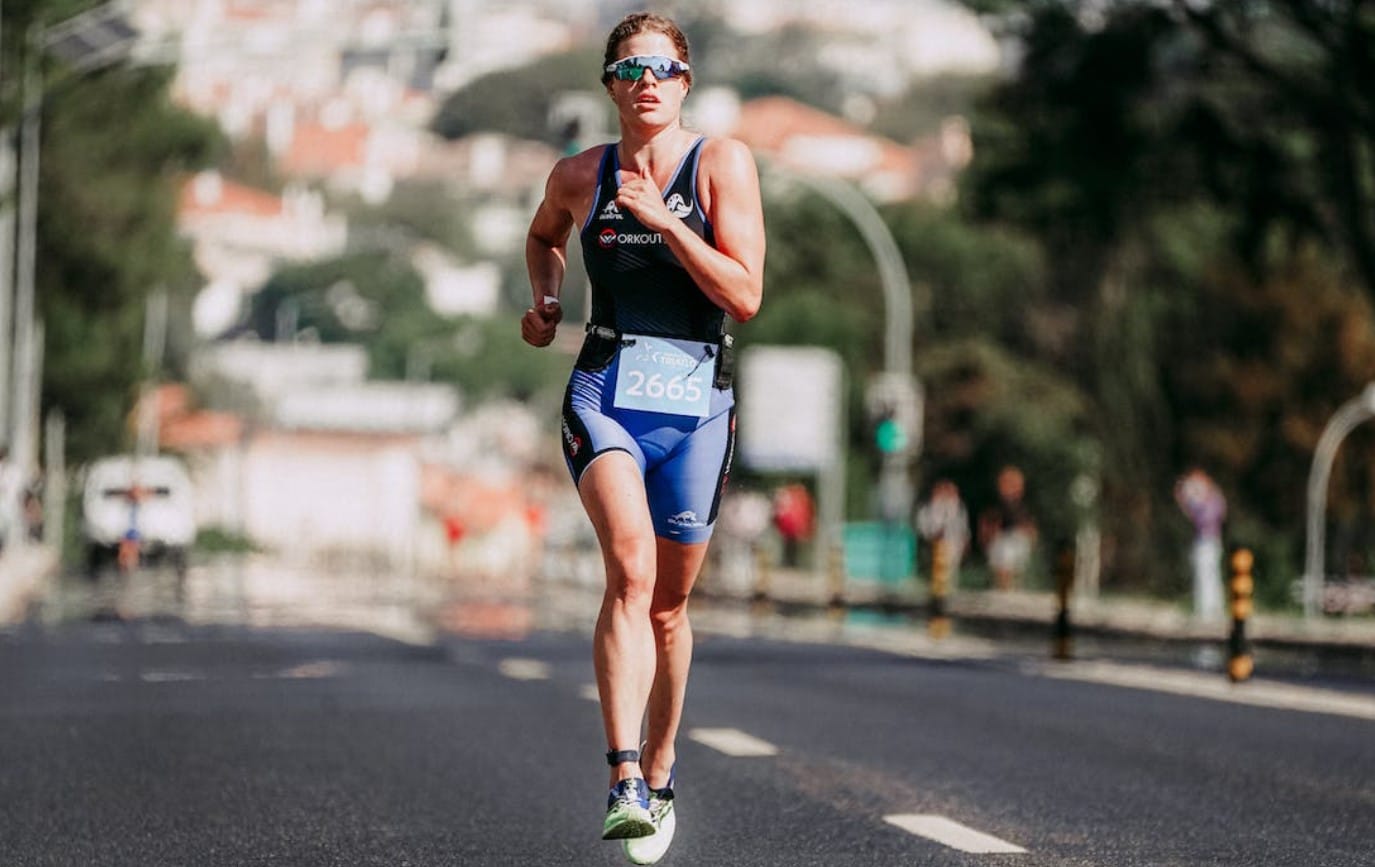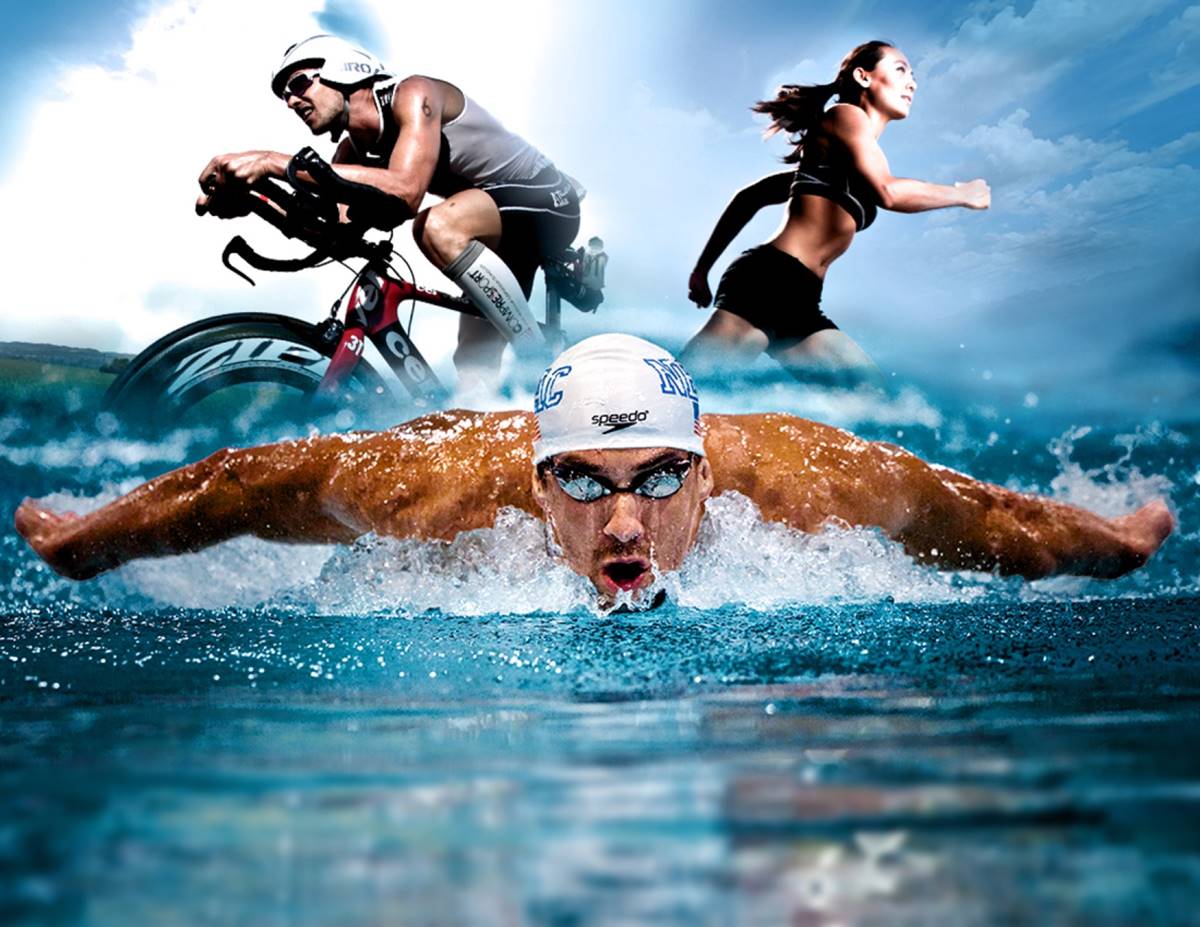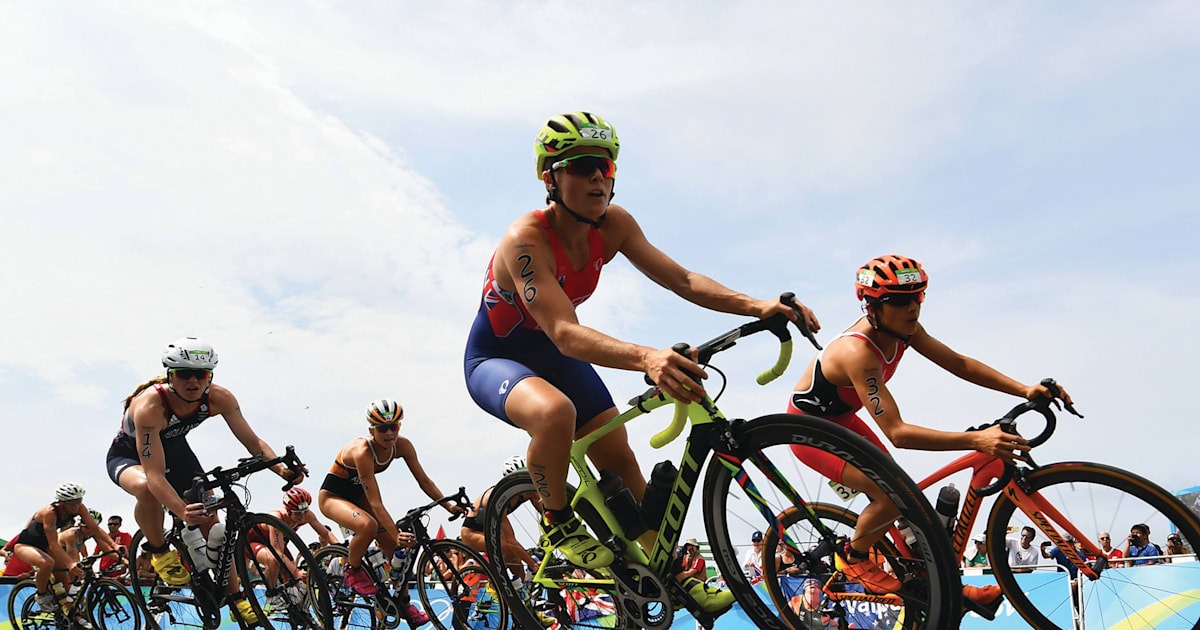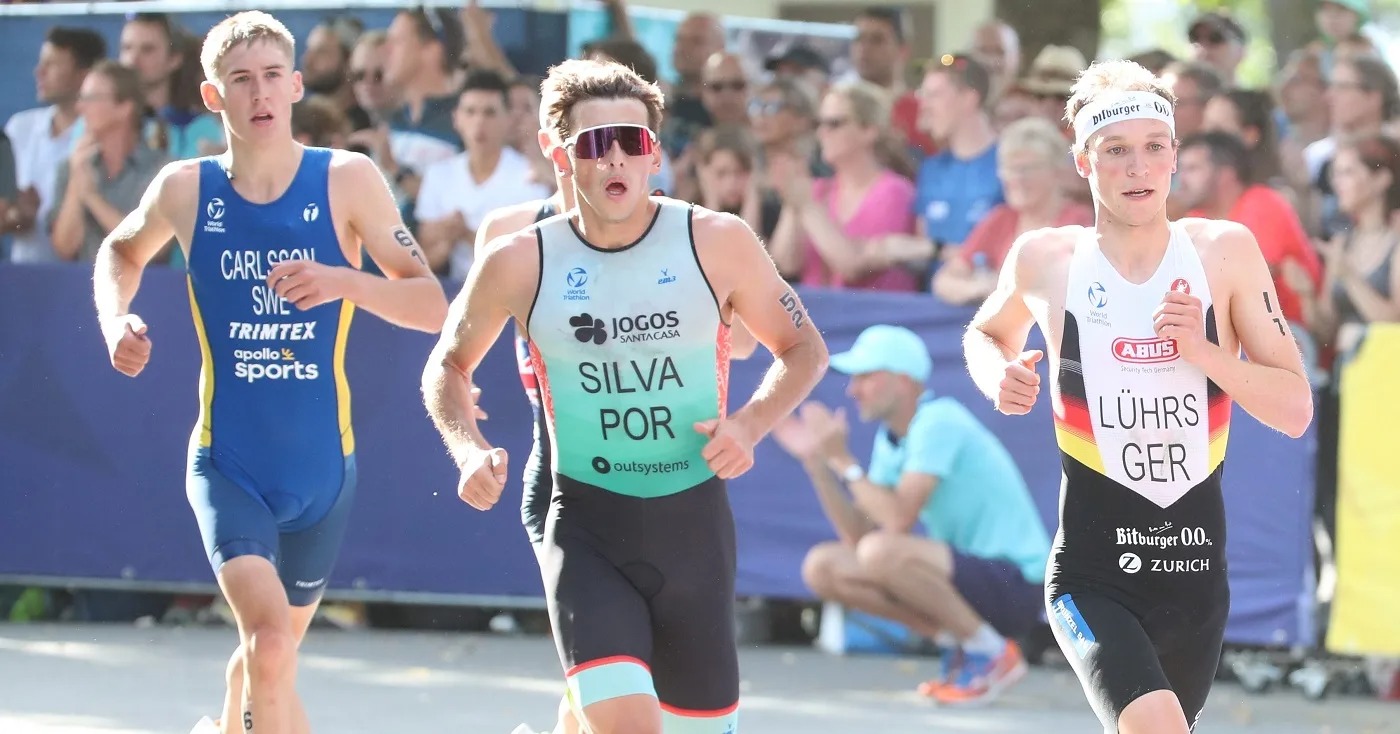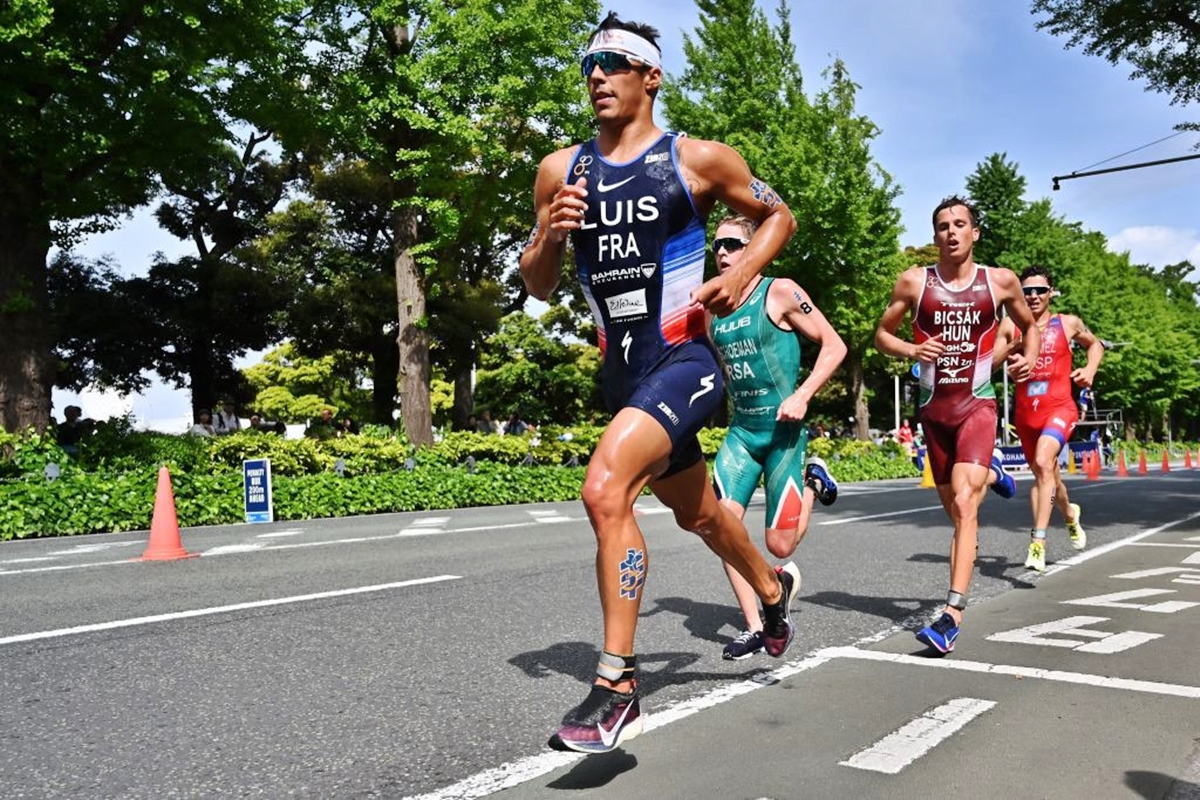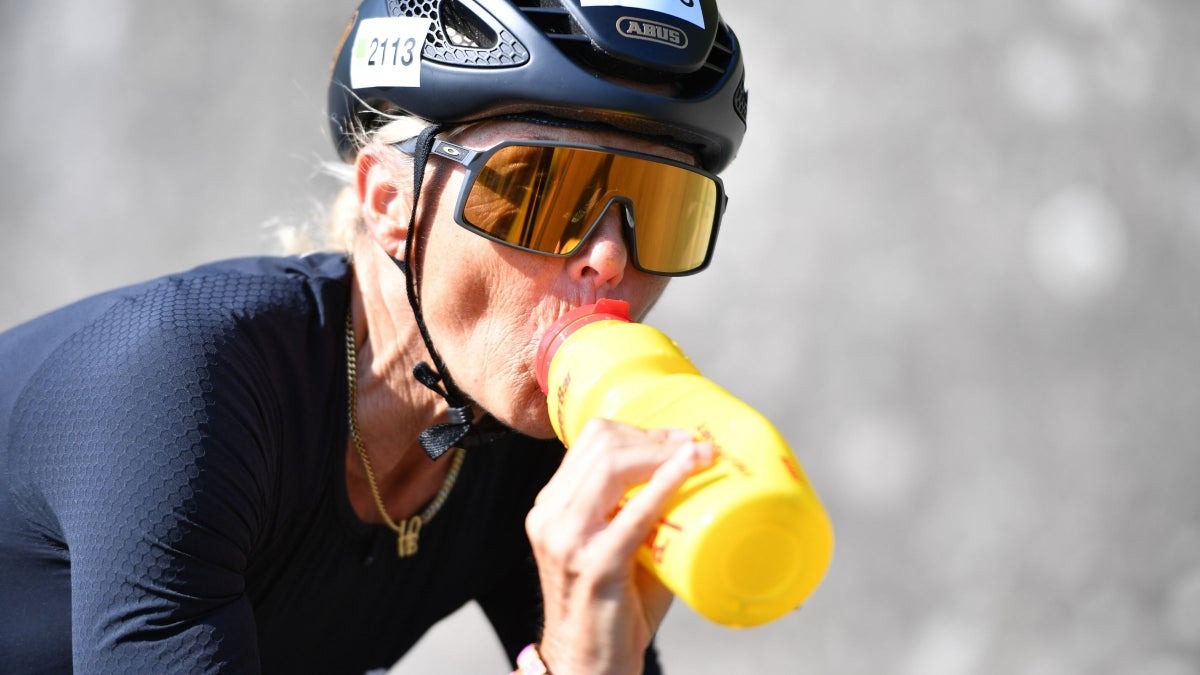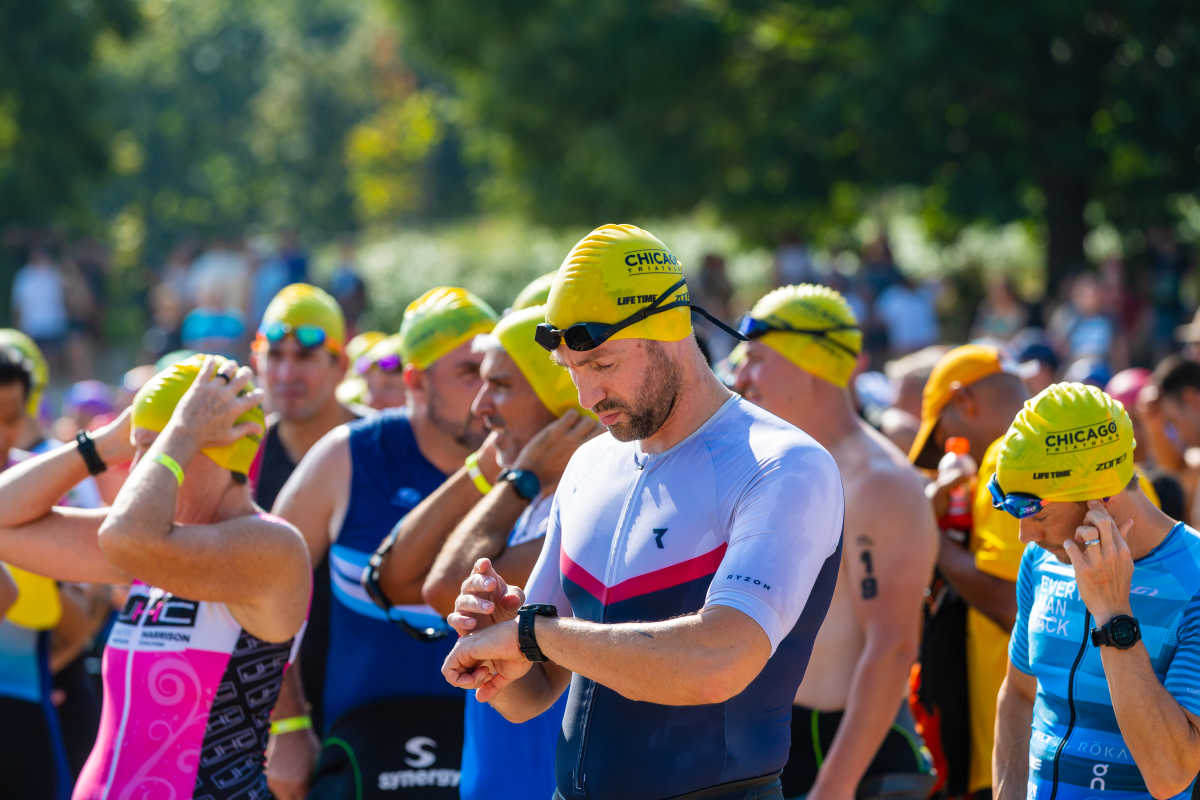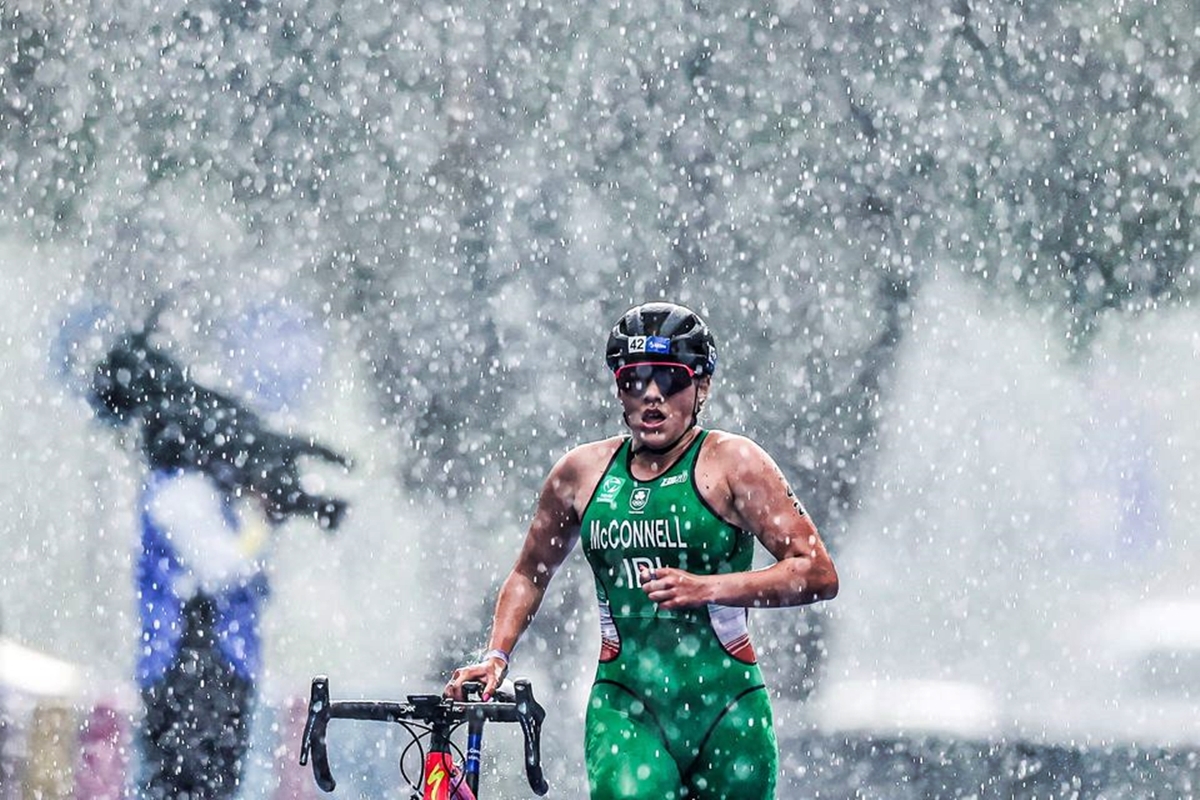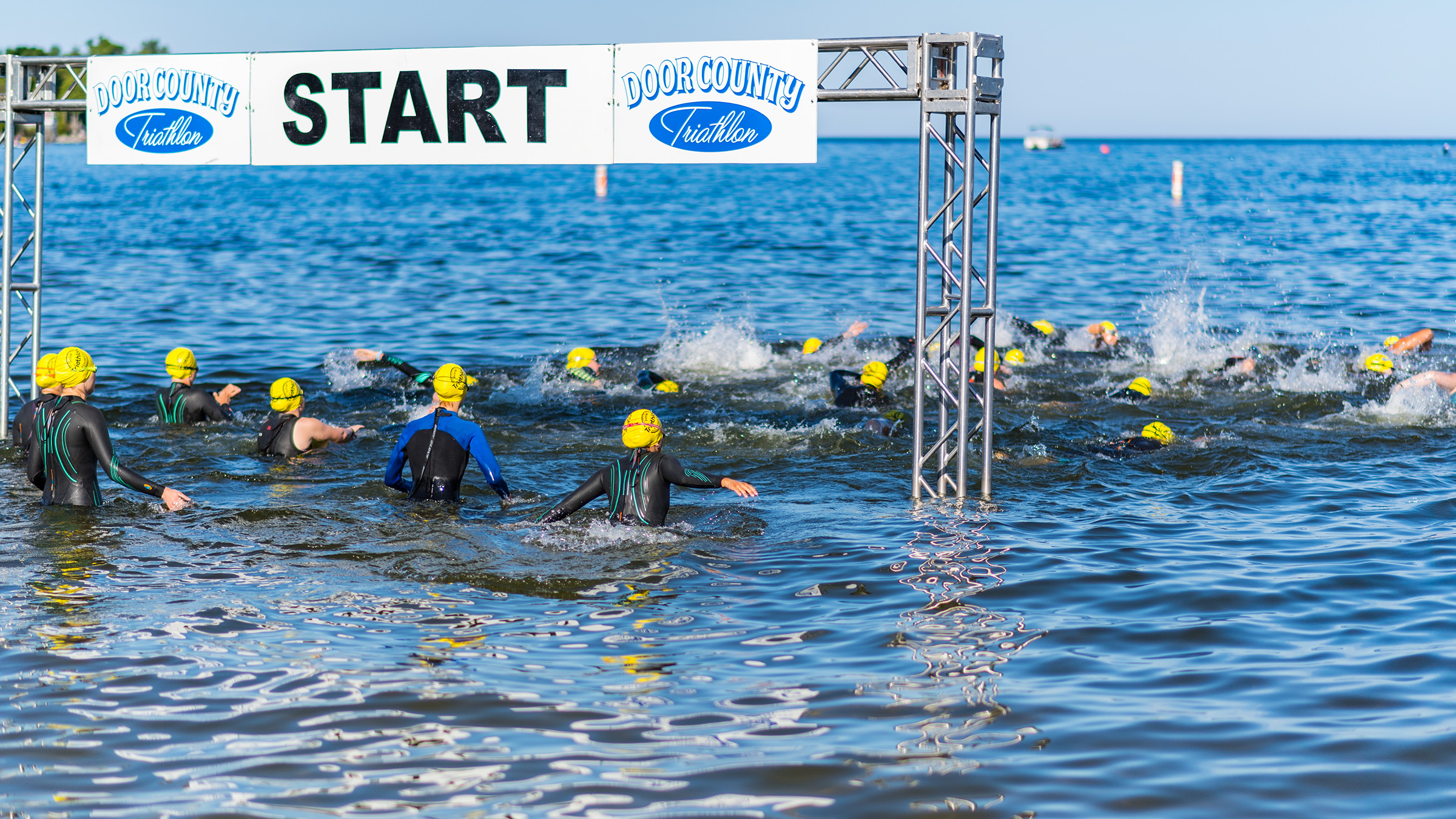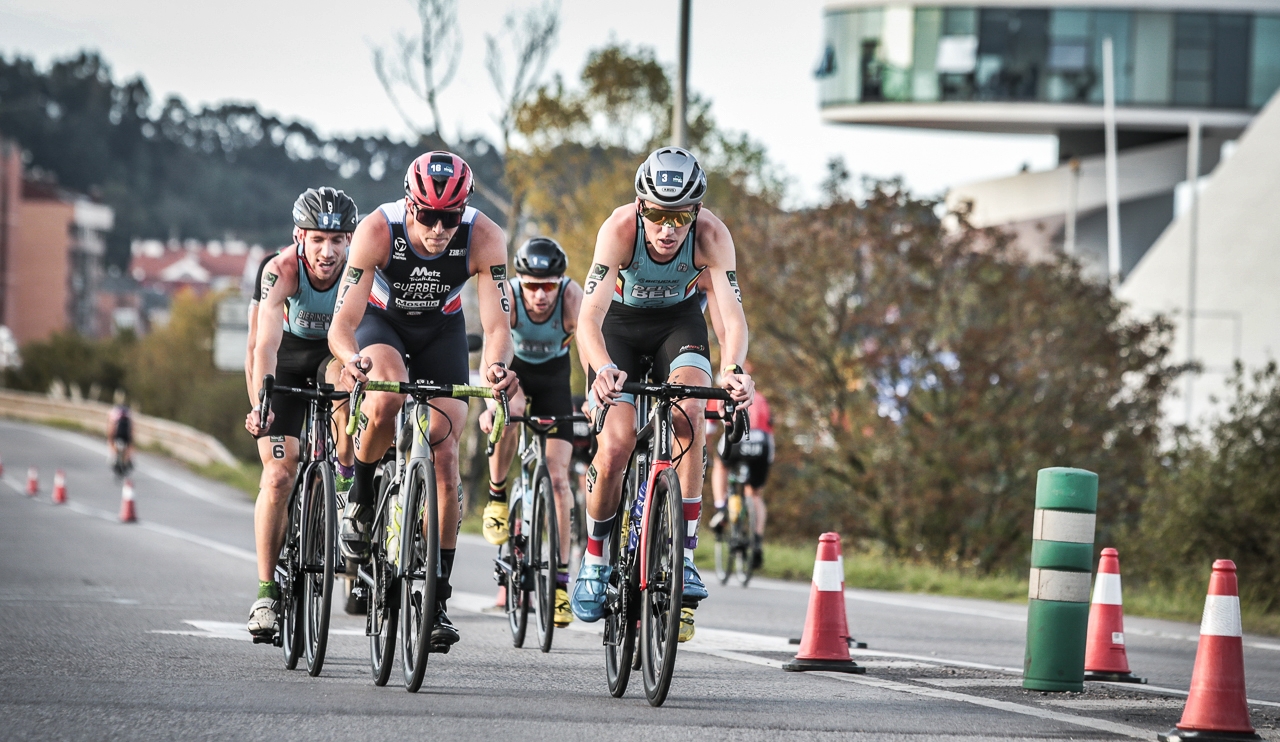

Featured
When Does Triathlon Season Start
Modified: January 2, 2024
Get ready for the featured triathlon season! Find out when it starts and make sure you're prepared to tackle the challenges ahead.
Introduction
Welcome to the exciting world of triathlon! Whether you are a seasoned triathlete or just starting out, understanding the ins and outs of the sport can help you make the most of the triathlon season. In this article, we will explore what triathlon is all about, the different types of triathlon events, the importance of off-season training, and how to prepare for a successful triathlon season.
Triathlon is a multi-sport event that combines swimming, cycling, and running into one challenging race. It tests not only your physical endurance but also your mental strength and strategic planning. Triathlons can vary in distance, from sprint triathlons with shorter distances to Ironman triathlons that push athletes to their limits.
Triathlon events are typically divided into three main categories: sprint, Olympic, and long-distance. Sprint triathlons are the shortest, with a 750-meter swim, 20-kilometer bike ride, and a 5-kilometer run. Olympic distance triathlons double the distance, with a 1.5-kilometer swim, 40-kilometer bike ride, and a 10-kilometer run. Long-distance triathlons, such as the renowned Ironman, consist of a 3.8-kilometer swim, a 180-kilometer bike ride, and a full marathon run of 42.2 kilometers.
While the triathlon season may have a distinct timeline, the off-season plays a crucial role in an athlete’s overall performance. It is during this time that triathletes focus on strength training, building endurance, and improving technique. By dedicating time to off-season training, athletes can enhance their performance during the triathlon season.
Planning and goal setting are key components of a successful triathlon season. Setting specific, measurable, achievable, relevant, and time-bound (SMART) goals can help athletes track their progress and stay motivated. Whether it’s improving your swim time, increasing cycling power, or perfecting your running form, setting goals provides a roadmap for success.
As the triathlon season approaches, it’s important to ensure that you are physically and mentally prepared. This includes fine-tuning your training plan, incorporating brick workouts (simulating the transitions between disciplines), practicing open water swims, and reviewing the race course. Proper nutrition, rest, and recovery are also essential for optimal performance.
What is Triathlon?
Triathlon is a multi-sport event that combines swimming, cycling, and running into one thrilling race. It originated in the 1970s and has since gained immense popularity worldwide. Triathletes push their physical and mental limits as they transition from one discipline to another, showcasing their versatility and endurance.
The sport of triathlon is built on the principles of balance, resilience, and determination. It offers a unique challenge that requires athletes to excel in three distinct disciplines:
- Swimming: The race typically starts with an open water swim. It may take place in a lake, ocean, or river, and the distance can vary depending on the triathlon distance category. Swimmers must navigate through the water, overcoming waves, currents, and other competitors, as they strive to complete this challenging leg of the race.
- Cycling: After completing the swim, triathletes transition to the cycling segment. They hop onto their bikes and pedal through a predetermined course. The cycling leg tests not only their endurance but also their cycling skills, as they navigate varied terrains and handle inclines and descents. The distance covered in this stage depends on the triathlon category.
- Running: The final leg of a triathlon is running, where athletes showcase their stamina and mental fortitude. After the cycling segment, participants rack their bikes and start the run. This is usually a road or trail run, with distances ranging from a few kilometers in sprint triathlons to a full marathon in long-distance triathlons. The challenge lies not only in physical fatigue but also in managing the transition from cycling to running.
Triathlon events offer various categories to accommodate athletes of different skill levels and ambitions. The sprint distance is perfect for beginners, with shorter distances that still provide a challenging experience. Olympic distance expands on the sprint category and is ideal for those looking to take their triathlon journey to the next level. For the ultimate test of physical and mental endurance, long-distance triathlons such as the Ironman are the pinnacle of the sport.
Triathlon is more than just a race. It is a community that fosters camaraderie and support among athletes. The spirit of triathlon can be seen during races, where competitors cheer each other on, offer encouragement, and celebrate the achievements of fellow triathletes. The sport attracts people from all walks of life, united by their passion for pushing boundaries and striving for personal growth.
With its combination of swimming, cycling, and running, triathlon offers a unique and thrilling experience for athletes around the world. Whether you are a beginner venturing into your first sprint triathlon or a seasoned triathlete aiming for a personal best, the sport of triathlon will challenge you, push your limits, and reward you with a sense of accomplishment like no other.
Types of Triathlon Events
Triathlon events come in various formats, catering to athletes of different skill levels and ambitions. Each type of triathlon offers a unique challenge and requires specific training and preparation. Let’s explore the three main categories of triathlon events:
- Sprint Triathlon: Sprint triathlons are a great starting point for beginners or those looking for a shorter but still challenging race. The distances in a sprint triathlon typically consist of a 750-meter swim, a 20-kilometer bike ride, and a 5-kilometer run. Sprint triathlons provide an excellent opportunity to experience the thrill of triathlon without the daunting distances of longer events.
- Olympic Triathlon: Olympic triathlons are the next step up in terms of distance and difficulty. The swim distance in an Olympic triathlon is usually 1.5 kilometers, followed by a 40-kilometer bike ride and a 10-kilometer run. The Olympic distance race pushes athletes to enhance their endurance and speed, making it a popular choice among intermediate triathletes.
- Long-Distance Triathlon: Long-distance triathlons, also known as Ironman or Iron-distance races, are the epitome of endurance athletic events. These races consist of a 3.8-kilometer swim, a grueling 180-kilometer bike ride, and a full marathon run of 42.2 kilometers. Completing a long-distance triathlon requires months of dedicated training, mental fortitude, and unwavering determination. The sense of accomplishment upon crossing the finish line is unparalleled.
In addition to these main categories, there are other variations of triathlon events that cater to specific interests or challenge athletes in unique ways:
- Relay Triathlon: Relay triathlons allow participants to compete as a team, with each team member completing one of the three disciplines. This format is perfect for those who want to experience the camaraderie of the sport while focusing on their strengths.
- Duathlon: A duathlon is a race that combines running and cycling but omits the swimming component. It is an excellent alternative for individuals who may not be comfortable with swimming, or for those who enjoy the challenge of the race format but prefer to avoid the water.
- Aquathlon: Aquathlons combine swimming and running, making it an ideal choice for athletes who excel in these disciplines. They offer a unique race experience and are often held in open water, such as lakes or the ocean.
It’s important to choose a triathlon event that aligns with your fitness level and goals. Whether you’re a beginner looking to dip your toes into the world of triathlon or an experienced athlete seeking a new challenge, there is a triathlon event for everyone. Embrace the adventure, set your goals, and embark on a journey that will test your limits and leave you with memories and achievements to last a lifetime.
Off-Season Training
The off-season is a crucial period for triathletes as it provides an opportunity to focus on strength training, recovery, and improving technique. While it may be tempting to take a break after a grueling triathlon season, utilizing the off-season effectively can greatly enhance your performance in the upcoming races. Here are some key aspects to consider during off-season training:
- Strength Training: Building strength is essential to improve overall performance and prevent injuries. Focus on exercises that target key muscle groups used in triathlon disciplines, such as squats and lunges for cycling and running, and upper body exercises for swimming. Incorporate weightlifting, bodyweight exercises, and resistance training to build strength and power. Working with a strength and conditioning coach can help you develop a personalized plan based on your needs and goals.
- Endurance Building: While the off-season is a time for recovery, maintaining a base level of endurance is important to prevent a decline in fitness. Incorporate low-intensity workouts, such as long, slow-distance runs or bike rides, and focus on increasing your aerobic capacity. This will lay a solid foundation for more intense training during the triathlon season.
- Technical Skills: Use the off-season to fine-tune your technical skills in each discipline. Work on perfecting your swimming technique, such as body position, breathing, and stroke mechanics. Practice cycling drills to improve efficiency and pedaling technique. Dedicate time to running drills that focus on form, cadence, and speed. A coach or experienced triathlete can provide guidance and help you identify areas for improvement.
- Rest and Recovery: Rest is just as important as training during the off-season. Allow your body time to recover from the previous season’s demands. This doesn’t mean sitting idle, but rather incorporating active recovery activities such as yoga, stretching, and foam rolling. Quality sleep and a balanced nutrition plan will also support your body’s recovery process.
- Cross-Training: Engaging in other forms of exercise during the off-season can provide a mental and physical break from the repetitive nature of triathlon training. Explore different activities such as hiking, kayaking, or playing a team sport. Cross-training helps improve overall fitness, works different muscle groups, and prevents burnout.
Remember, the off-season is a time to rejuvenate and lay the groundwork for the next triathlon season. Focus on building strength, maintaining endurance, refining technical skills, and prioritizing recovery. Use this time wisely, and you’ll be setting yourself up for a successful and fulfilling triathlon season ahead.
Planning and Goal Setting
Planning and goal setting play a vital role in ensuring a successful triathlon season. By setting specific, measurable, achievable, relevant, and time-bound (SMART) goals, you can track your progress, stay motivated, and ultimately achieve your desired outcomes. Here are some key tips for effective planning and goal setting in triathlon:
- Reflect on Past Performances: Take the time to reflect on your past triathlon performances. Assess what went well, areas for improvement, and lessons learned. This will help you identify where you can focus your efforts and set meaningful goals for the upcoming season.
- Set Specific and Measurable Goals: Make sure your goals are specific and measurable. Instead of a vague goal like “improve biking,” consider setting a goal to “increase average cycling speed by 2 km/h over the course of a 40-kilometer ride.” This provides a clear target to work towards and allows you to track your progress.
- Make Goals Achievable: While it’s important to set ambitious goals, they should still be achievable. Consider your current fitness level, time constraints, and other commitments when setting your goals. Setting unrealistic expectations can lead to frustration and burnout. Gradually build upon your performance from previous seasons to ensure steady progress.
- Keep Goals Relevant: Ensure that your goals are relevant to your overall triathlon objectives. For example, if your main focus is a long-distance triathlon, setting a goal to improve running speed would be more relevant than focusing solely on cycling performance.
- Set Time-Bound Goals: Assign a timeframe to your goals to create a sense of urgency and accountability. Whether it’s for a specific race or a target date during the triathlon season, having a deadline helps structure your training and motivates you to stay on track.
- Break Goals Down into Smaller Steps: Breaking your goals into smaller, manageable steps can make them less overwhelming and more attainable. Create a training plan that incorporates incremental improvements, allowing you to progress gradually towards your target.
- Track Your Progress: Regularly track and assess your progress towards your goals. Keep a training log where you record your workouts, distances, times, and any notable achievements. This will help you identify areas of improvement and celebrate milestones along the way.
- Stay Flexible and Adapt: Remember that goals may need to be adjusted as circumstances change. Be open to adapting your goals based on feedback from your body, changes in your schedule, or unexpected events. Flexibility is key in maintaining motivation and ensuring a successful triathlon season.
- Seek Support and Accountability: Share your goals with a training partner, coach, or supportive community. Having someone to hold you accountable and provide guidance can greatly enhance your chances of achieving your goals. Surround yourself with like-minded individuals who will support and motivate you throughout your triathlon journey.
Planning and goal setting are essential components of a successful triathlon season. By setting SMART goals, tracking your progress, and maintaining flexibility, you can stay motivated, make meaningful improvements, and enjoy the journey towards achieving your triathlon aspirations.
Preparing for the Triathlon Season
Preparing for the triathlon season requires careful planning, consistent training, and a focus on overall fitness and well-being. By following a structured approach and incorporating key aspects into your preparation, you can optimize your performance and maximize your enjoyment of the sport. Here are some important steps to consider as you prepare for the triathlon season:
- Fine-Tune Your Training Plan: Review and refine your training plan to align with your goals and the demands of your upcoming races. Consider working with a coach or using a training program specifically designed for triathlon. Incorporate a balance of swimming, cycling, and running workouts, along with strength and cross-training exercises to build endurance and prevent overuse injuries.
- Incorporate Brick Workouts: Brick workouts involve combining two or more disciplines back-to-back to simulate race conditions and improve your ability to transition smoothly between them. For example, practice a bike-to-run brick workout by completing a bike ride followed immediately by a run to help your body adapt to the change in muscle recruitment and movement transitions.
- Practice Open Water Swims: If your upcoming races involve open water swims, practice swimming in similar conditions. This will enhance your comfort level in open water and help you adapt to factors like waves, currents, and sighting. Find a local open water swimming venue or join a triathlon training group for guided practice sessions.
- Review the Race Course: Familiarize yourself with the race course, including the swim, bike, and run segments. Study maps, review elevation profiles, and take note of any challenging sections or transitions. Visualizing the course beforehand can help you strategize and mentally prepare for the race.
- Focus on Nutrition: Proper nutrition is essential for fueling your workouts and aiding in recovery. Pay attention to your diet, ensuring it is balanced and provides the necessary nutrients for optimal performance. Consult with a sports nutritionist if needed to develop a nutrition plan tailored to your specific needs and goals.
- Rest and Recovery: Give your body ample time to rest and recover between workouts. Incorporate rest days into your training plan to allow for muscle repair and to prevent overtraining. Listen to your body and modify your training if signs of fatigue or injury arise.
- Mental Preparation: Mental preparation is just as important as physical training. Develop mental strategies such as visualization, positive self-talk, and goal-setting to enhance your mental resilience and focus during races. Practice mindfulness techniques and find ways to stay motivated and confident in your abilities.
- Get Adequate Sleep: Quality sleep is crucial for performance and recovery. Aim for seven to nine hours of sleep each night, ensuring you prioritize restful sleep. Create a nighttime routine, establish a sleep schedule, and create an optimal sleep environment for better sleep quality.
- Seek Support and Accountability: Surround yourself with a supportive network of fellow triathletes, training partners, or a triathlon club. Share your goals, challenges, and triumphs with others who understand the demands of the sport. The camaraderie and support can keep you motivated and accountable throughout your triathlon season.
Preparing for the triathlon season requires a holistic approach that encompasses training, nutrition, rest, and mental preparation. By incorporating these strategies into your preparation, you will be well-equipped to tackle the challenges of the race and fully embrace the excitement and fulfillment that triathlon brings.
Tips for a Successful Triathlon Season
A successful triathlon season is the result of careful planning, consistent training, and a positive mindset. Whether you’re a novice or experienced triathlete, these tips can help you make the most of your season and reach new heights in your performance:
- Set Realistic Expectations: Be realistic with your goals and expectations. Understand that progress takes time, and improvements may come gradually. Focus on your personal growth and celebrate every milestone, no matter how small.
- Consistency is Key: Consistency in training is vital for progress and performance. Stick to your training schedule, prioritize your workouts, and make them a non-negotiable part of your routine. Find a balance that works for you and commit to regular training sessions.
- Listen to Your Body: Pay attention to your body’s signals and adjust your training accordingly. Push yourself, but also know when to rest and recover. Ignoring warning signs of fatigue or injury can hinder your progress and risk long-term damage.
- Practice Transitions: Transitions can make a significant difference in your overall race time. Practice smooth transitions between disciplines during your training to minimize time lost during these periods. Set up a mock transition area at home and rehearse the process regularly.
- Stay Hydrated and Fuel Properly: Proper hydration and nutrition are crucial during training and races. Stay hydrated throughout the day, particularly during long training sessions. Practice your race day nutrition strategy during training to ensure it works for you and avoids any digestive issues.
- Embrace Cross-Training: Incorporate cross-training activities to improve overall fitness and prevent overuse injuries. Engage in activities such as yoga, swimming, strength training, or cycling to balance your triathlon training and work different muscle groups.
- Find a Training Partner or Join a Group: Training with a partner or joining a triathlon group can provide motivation, accountability, and a sense of community. Surrounding yourself with like-minded individuals who share your passion can positively impact your training and performance.
- Visualize Success: Use visualization techniques to mentally prepare for races. Visualize yourself performing well, overcoming challenges, and crossing the finish line successfully. This mental practice can enhance your confidence and focus during the actual race.
- Enjoy the Process: Remember to enjoy the journey of triathlon. Embrace the ups and downs, the progress, and the setbacks. Celebrate each accomplishment along the way and savor the sense of accomplishment that comes with completing a triathlon.
- Seek Professional Guidance: Consider working with a triathlon coach who can provide guidance, tailor your training plan to your specific needs, and offer expertise in technique, race strategy, and overall performance optimization.
Keep these tips in mind as you prepare for your triathlon season. Remember that success in triathlon is not just about the end result but also about the journey and the personal growth you experience along the way. Stay committed, stay focused, and enjoy every moment of your triathlon season!
Conclusion
As you embark on your triathlon journey, it is important to understand the dynamics of the sport and implement strategies that will set you up for success. Triathlon, with its combination of swimming, cycling, and running, offers a unique and rewarding challenge that pushes your limits both physically and mentally.
Throughout this article, we have explored various aspects of triathlon, including the different types of triathlon events, the significance of off-season training, the importance of planning and goal setting, tips for preparing for the triathlon season, and key strategies for a successful triathlon season.
By focusing on consistent training, setting realistic goals, incorporating cross-training, and practicing smooth transitions, you can optimize your performance and enhance your overall triathlon experience. Proper nutrition, rest, and recovery are also crucial elements that contribute to your success on and off the racecourse.
Remember, the journey towards your triathlon goals might have its challenges, but it is in overcoming those obstacles that you find growth and fulfillment. Embrace the process, celebrate your achievements, and learn from setbacks. Most importantly, enjoy the thrill of triathlon and the incredible sense of accomplishment that comes with crossing the finish line.
As you immerse yourself in the triathlon community, surround yourself with supportive training partners and seek professional guidance when needed. Triathlon is not just a sport but a vibrant community that fosters camaraderie, motivation, and continuous improvement.
So, lace up your running shoes, hop on your bike, and dive into the pool. The triathlon season is waiting, filled with new challenges, personal triumphs, and incredible moments that will leave an indelible mark on your life. Embrace the journey, embrace the sport, and let the adventure begin!
